In this guide, we present to you the best eGPU cards available now. We advise you to bookmark this page now, and revisit it before you make any purchase because we constantly update it with the lowest prices.
Best Choice
GIGABYTE AORUS
RTX 2070 Gaming Box
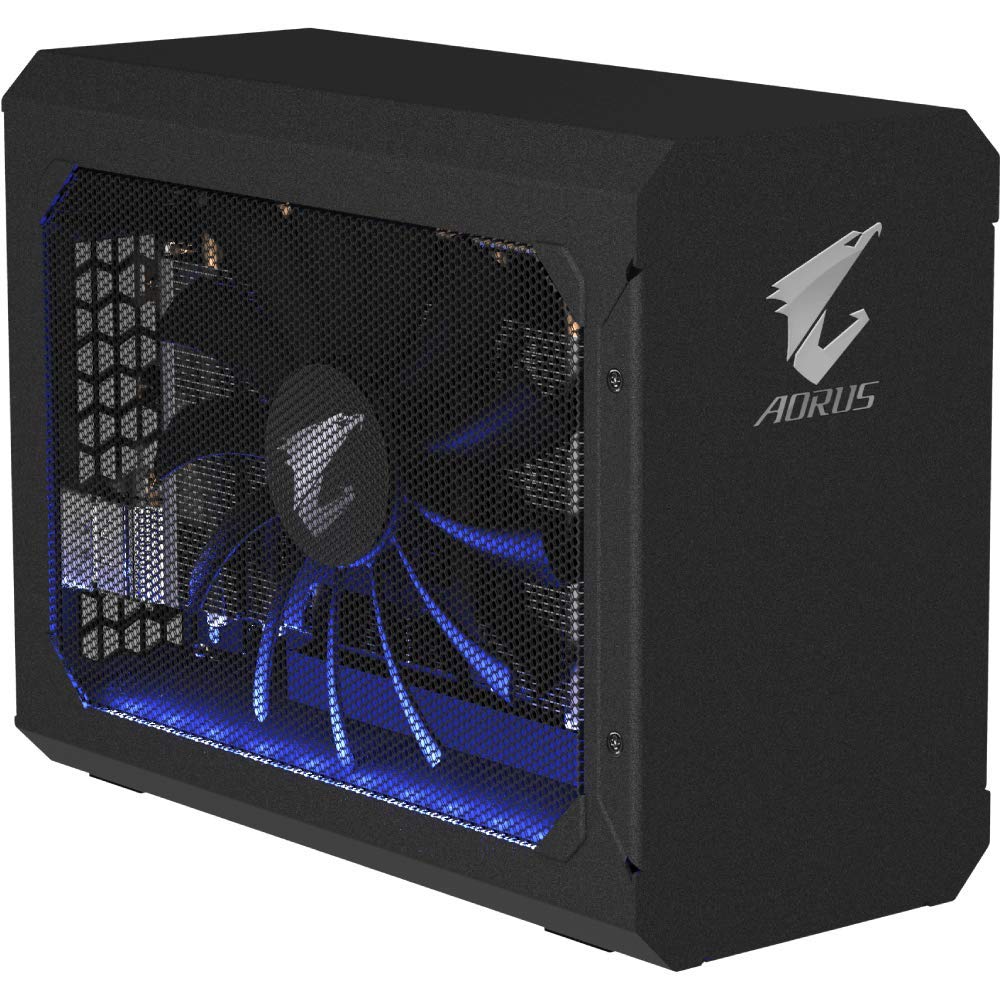
Looks Cool
Solid external GPU that lives up to its value.
Reliable fan cooling system, which improves performance and aesthetic value.
Premium
ASUS ROG-XG-Station-2
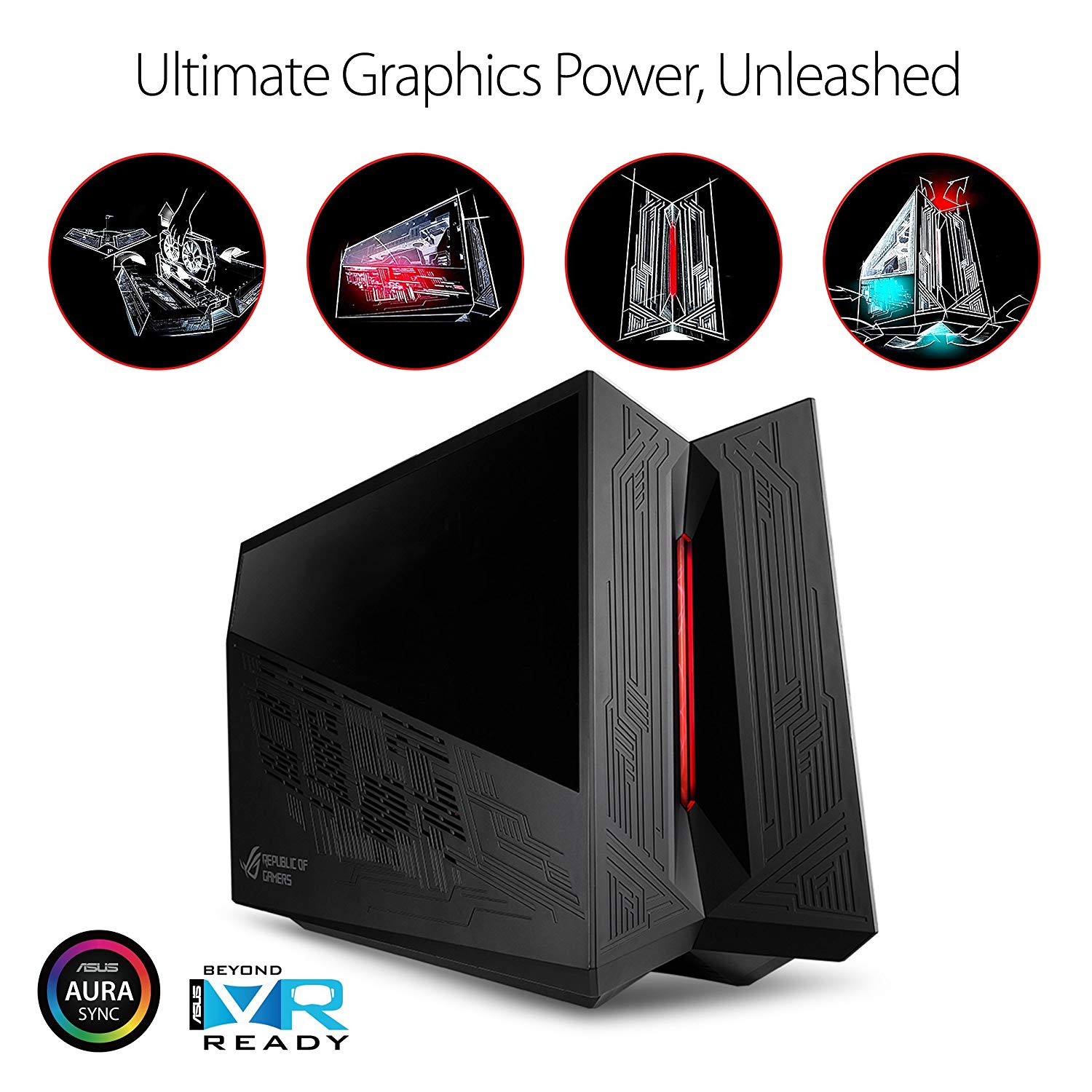
Massive Horsepower
It will transform any device you hook up to it.
It's more like a computer that’s only missing a handful of internals.
Best Value
OMEN by HP
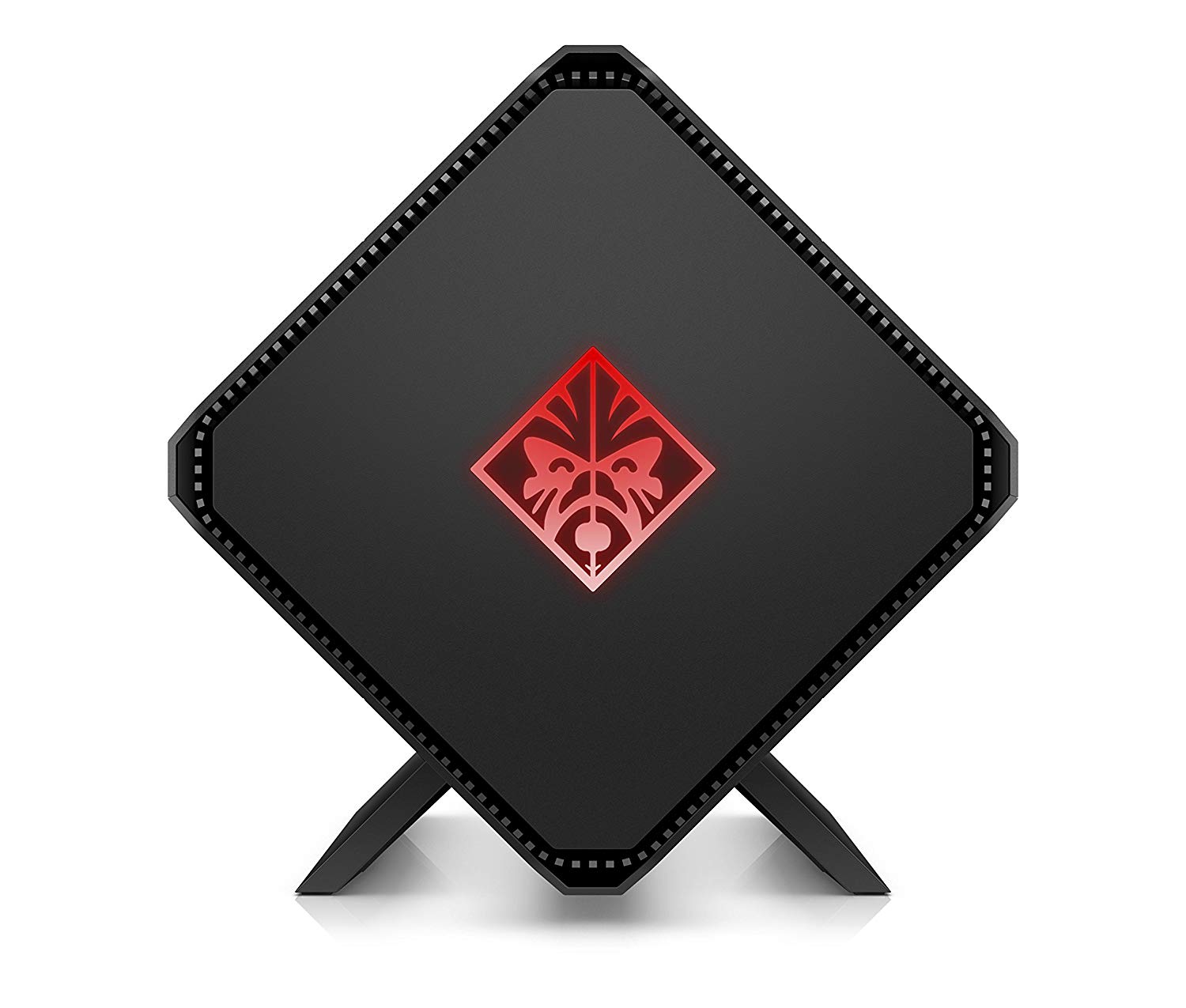
Impressive Build Quality
You’re likely in for a good show.
Shares its aesthetic with HP’s other Omen lineup of products.
The Best (External) GPU Enclosure is:
Read our external graphics card reviews below this table to find your pick for the best eGPU.
|
Very sharp + clean design
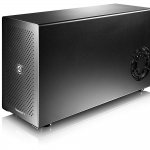 |
AkiTio Node
|
Check Price on Amazon.com | |
|
Impressive build quality
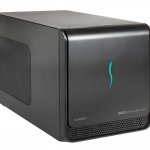 |
Sonnet eGFX Breakaway Box
|
Check Price on Amazon.com | |
|
Pocket friendly
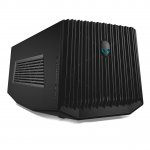 |
Alienware Graphics Amplifier
|
Check Price on Amazon.com | |
|
Best value
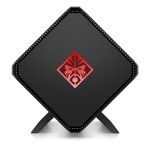 |
HP Omen Accelerator
|
Check Price on Amazon.com | |
|
Pretty much solid
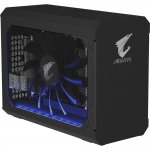 |
GIGABYTE GeForce RTX 2070
|
Check Price on Amazon.com |
Tired of dealing with sub-optimal frame rates or needing to slide down a few frustrating resolutions on your expensive gaming laptop, just to be able to play that newest AAA title? Ever wondered what budget gaming on the go would be like if you could switch out mobile graphics the way you could with most desktop systems?
If anything along these lines has crossed your mind at some time or the other, you might find what you’re looking for below.
The best external GPU enclosures are capable of breathing new life into your laptop, but they aren’t the ultimate solution by a long run. Most modern laptops come outfitted with Thunderbolt 3 or USB Type-C to accommodate GPUs to some extent, but only about a handful of older machines, such as mobile workstations and premium gaming laptops, would support MPCI or Express-card slots that can be retrofitted to interface with an external GPU.
Even with a Thunderbolt-3 connection (32GBPS), you’re going to experience stunted performance on the best eGPU compared to your desktop’s PCIE (126gbps) connection, but don’t let this dissuade you from getting a better card, as desktop graphics tend to be far more efficient and powerful than their mobile counterparts.
We’ve gathered some of the best external GPU enclosures and set them against each other to find out which of their kind would be worthy of your backpack, with only the greatest making it on to this list. Below, you’ll find the best eGPU s of 2020, all stacked into a neat little pile for your viewing pleasure.
But first…
What is an (external) GPU for a laptop?
Given that you’re reading this article, it’s safe to assume that you’re interested in finding the best eGPU. You may be a laptop owner who is interested in getting more out of your laptop, or you’re on a desktop and are just curious.
Regardless of what the case may be, external GPU graphics amplifiers are a really cool concept hindered only by a small market. Below, we’ll go over what they are.
A brief explanation saying that “an external GPU for a laptop is a box that plugs into your laptop, and you can put a graphics card in it” wouldn’t be wrong, but there’s so much more to it than that.
The best external GPU enclosure itself is rather simple—usually, it is just some form of a box with ventilation. Some variants will offer expanded I/O for your laptop. Extra USB ports, HDMI/DisplayPort, SD card readers, Ethernet, and more may be on offer. These are intended to act as an aid, as most laptops only have a very small amount of I/O.
This is especially true with laptops that offer USB Type-C ports, which we’ll be focusing on a lot more later in the article.
An external graphics amplifier typically contains these elements: an enclosure for the best GPU itself, expanded I/O, ventilation for the card, and sometimes, a fan(s) for additional cooling, a standalone PCB for the external graphics card dock to interface with, and a power supply to deliver additional power to the card, if necessary.
The external GPU enclosure will terminate in a single cable that will plug into your laptop. These pieces all come together to create a seamless piece of hardware offering an elegant solution to enhance your laptop’s graphical capabilities. Unfortunately, this comes at the price of a few headaches along the way.
Buyers Beware
If the concept of a single box with a single cable to make your laptop much faster sounds too good to be true, you’d be somewhat right. Between inconsistencies among the best external GPU enclosures, only one type of interface really is worth using, and driver issues, not to mention whether or not your laptop even supports the interface, form part of a lot of hoops to jump through before you can get right into picking what enclosure and card you want.
That is, of course, unless you’re on a Razer Blade using a Razer Core or a few Alienware models using an Alienware Graphics Amplifier.
While we’ll go over it in more detail later, it’s worth mentioning now that USB Type-C with Thunderbolt 3 is the best—and, in some respects, the only way to go—when it comes to using an external graphics card dock. The Thunderbolt 3 interface supports data transfers of up to 40Gbps.
This is nearly equivalent to PCI-E 3 4x speeds. Anything below this, and you’ll find that your card harshly underperforms. Your framerates will be much lower than they otherwise would be, and in some cases, you might even encounter frame skipping and stutters.
Next, you’re going to want to ensure that your laptop not only has USB Type-C but that it also has Thunderbolt 3 support, which uses the USB Type-C interface. If you have USB Type-C, it might only have SuperSpeed USB support, which is roughly equal to 10Gbps of bandwidth or 25% of that offered by the Thunderbolt 3.
There are only a few laptops available with Thunderbolt 3 support as of now, but that should change going into the future.
With all of this said, we have a few tips for you to ensure that your experience is as pleasant as it can be.
Buyer’s Notes:
- Ensure your laptop has USB Type-C support.
- Ensure that your USB Type-C is Thunderbolt 3.
- Note that not all enclosures will work on all systems, and some enclosures claiming to work only on one brand might work on others.
- Ensure that the enclosure you purchase uses the Thunderbolt 3 interface.
- An external GPU for a laptop might not benefit you if your laptop’s CPU is very old or slow.
- Keeping all of this in mind, your experience as a shopper should be pleasant and painless.
What Type of Graphics Amplifier do I want?
Above, I tried to drive home how important it is that your external GPU and laptop both support Thunderbolt 3. This is true, but I wanted to take the opportunity to go over a few types of interfaces you’re likely to see while shopping for the best GPU.
USB 3.0
Arguably the worst solution out of all current enclosures, USB 3.0 offers the bare minimum in bandwidth for the best GPU: 5Gbps. This is the only 1/8th of what is offered on Thunderbolt 3 and is roughly equivalent to PCI-E 2.0 1x speeds. This would simply starve the card for bandwidth and result in an awful experience. That being said, it will be a step up from integrated graphics, so in an absolute bind, it is a possible solution.
USB Type-C
Bear with me here, it’s about to get confusing.
USB Type-C is different from Thunderbolt 3 in that Thunderbolt 3 is an interface that can be adapted into USB Type-C. However, USB Type-C can also be using the SuperSpeed USB interface. This will result in speeds of either 5Gbps (same as USB 3.0) or 10Gbps, which is about 25% of the bandwidth possible through Thunderbolt 3. If your enclosure only supports SuperSpeed USB Type-C, you’re going to be limited in the amount of bandwidth your external GPU has access to, and this will hurt your experience. However, if the interface is 10Gbps and not 5, it won’t be quite as bad.
Thunderbolt 3
It’s important to note that Thunderbolt 3 is not a connector type. It’s actually a type of interface that is often used by USB Type-C. This enables data rates of up to 40Gbps and power delivery of up to 100W, and it can be adapted into many USB ports or other interfaces.
Having an enclosure that supports USB Type-C is important, as this will allow your external GPU to have full access to more than enough bandwidth for modern best GPUs. This interface can also transfer enough power over Thunderbolt 3 to allow low-power cards to be powered without an additional power supply.
While these explanations are simple and only scratch the surface of the technical background behind these connectors and interfaces, it should give you more than enough information about what to look for when buying the best external GPU enclosure or best GPUs.
What is an eGPU?
At this point, it’s safe to bet that you know what to look for, but just in case, we’ll go over it one more time.
When buying the best external GPU Enclosure, look for one that supports Thunderbolt 3 over USB Type-C, if your laptop supports it. If you only have access to USB 3.0, then do that if you absolutely have to. Note though that this is the last resort, as the bandwidth offered over USB 3.0 is not nearly enough for modern graphics amplifiers.
Buying a product like this can be daunting, what with how many variables there are to ensure you have a comfortable experience. From brand-exclusive best GPUs to interfaces and other conditions for compatibility, buying something like this isn’t nearly as simple as buying a new graphics card, computer case, or power supply. To help alleviate some of this, we’ve laid out a few product recommendations to get you started.
1
GIGABYTE AORUS RTX 2070 Gaming Box

The Gigabyte AORUS Gaming Box with GeForce RTX 2070 arguably will make you spend more than other external GPUs in the market, but if you are a graphics game strong kind of person, this one is pretty much solid and lives up to its value.
Moreover, we should not forget that when it comes to RTX 2070s existing now, Gigabyte GeForce RTX 2070 is still surprisingly cheaper than its counterparts! Spending more won’t be an issue because it offers an impressive 1440p gaming performance, plus it has a reliable fan cooling system, which not only improves the performance of this best eGPU but also amplifies its aesthetic value because, let’s admit it, it looks cool (no pun intended).
2
ASUS ROG-XG-STATION-2 (External) GPU Review

The ASUS ROG-XG-STATION-2 is less of a best external GPU enclosure for your laptop and more like a computer that’s only missing a handful of internals. Boasting a 600W PSU on board, 5x USB 3.0 ports, Ethernet, and even an external thunderbolt connector, the ASUS ROG-XG-STATION-2 is a massive overhaul to not only your laptop or gaming tablet’s graphics horsepower but also it’s I/O.
While the gamer aesthetic may not be appreciated by many, there’s no argument here that this will transform any device you hook up to it. As mentioned previously, when paired with a good graphics card, this is practically an entirely new computer. It’s no wonder this thing took so long to become available.
3
HP Omen External Graphics Card

HP has been known for their impressive build quality and features at an affordable price and the Omen Accelerator is a great addition to the lineup. It shares its aesthetic with HP’s other Omen lineup of products, including their Omen X desktop PCs.
This cool-looking external GPU offer not only external graphics but also additional I/O, as well as external SSD support. It will definitely do its job in increasing the storage of your games and also optimizing your gaming performance to its peak condition without upgrading your laptop.
It is also has Thunderbolt 3-certified USB-C connectivity which highly improves its gaming power and charges your laptop at the same time. This external GPU is compatible with Windows-based PCs and comes with a one-year warranty.
4
Sonnet eGFX Breakaway Box Review
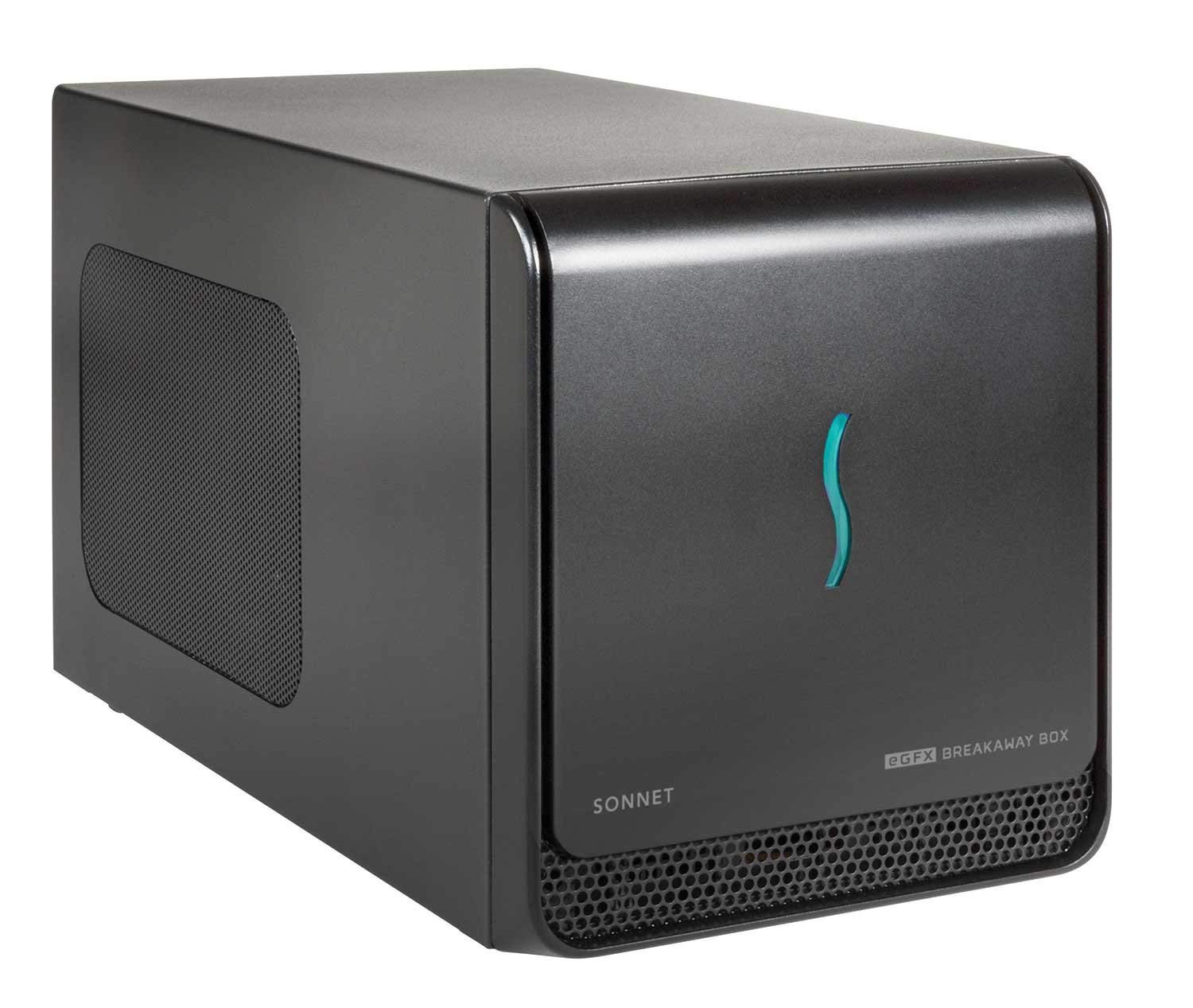
Sonnet eGFX Breakaway Box is another best eGPU on the market that offers impressive build quality, support for a wide range of best GPUs, and Thunderbolt 3, and it comes in at an excellent, affordable price. The blue LED on the front is subtle, but it is a nice little touch to add a bit of visual flair to the product.
Another nice detail is that the Breakaway Box also comes with a Thunderbolt 3 cable, so you won’t need to buy one separately to get started. With a massive panel for ventilation, you won’t have to worry about your graphics card overheating. Lastly, the enclosure supports Macs, which not many external GPUs do.
5
Alienware Graphics Amplifier Review
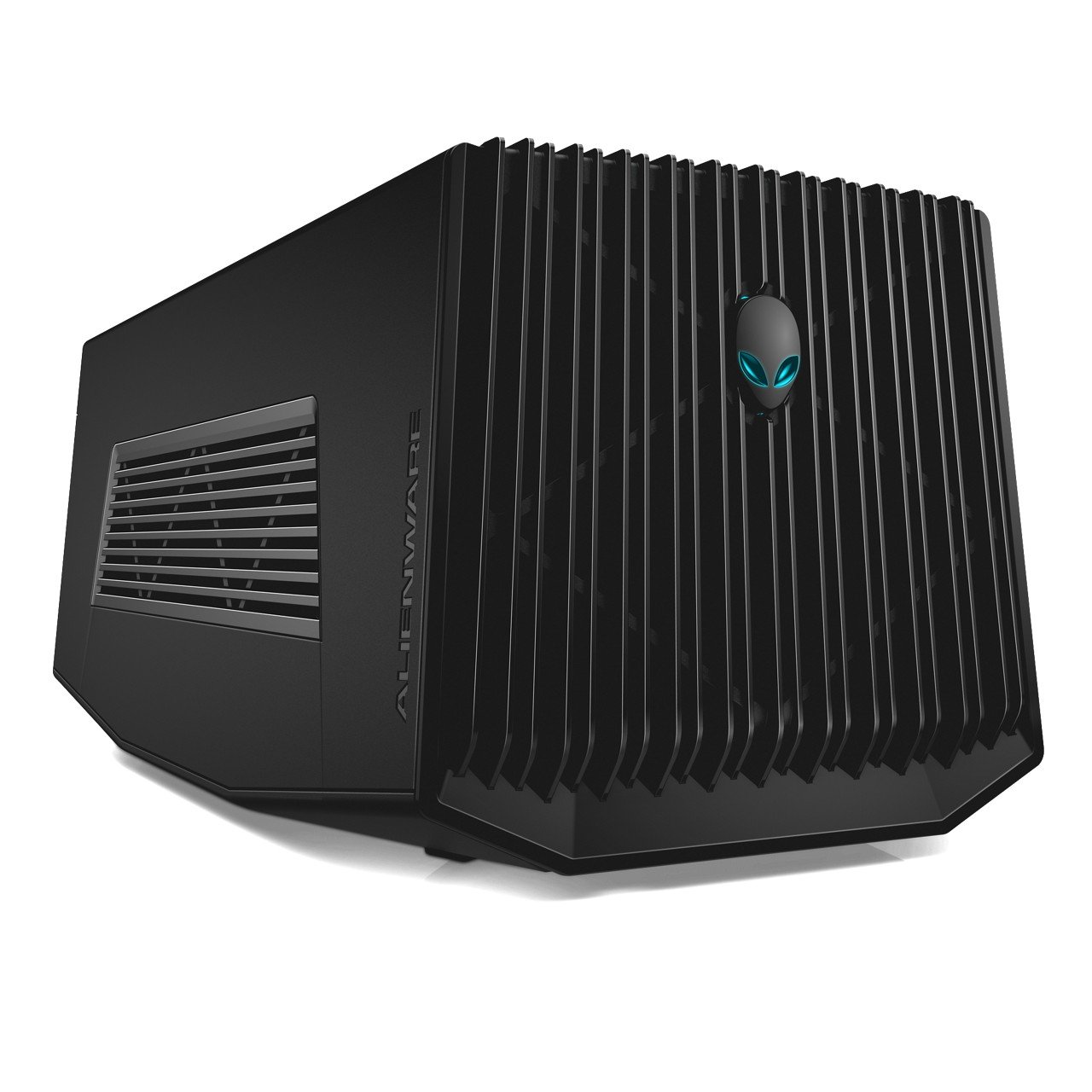
The Alienware Graphics Amplifier is well-built, has support for a variety of best GPUs, and is relatively inexpensive. Unfortunately, this comes at the price of Alienware opting to use a proprietary connector for the enclosure, which means the device will only be supported on Alienware devices.
However, this proprietary connector boasts performance comparable to Thunderbolt 3, so you shouldn’t have to worry about bandwidth issues with any modern external GPU.
6
AkiTio Node Review
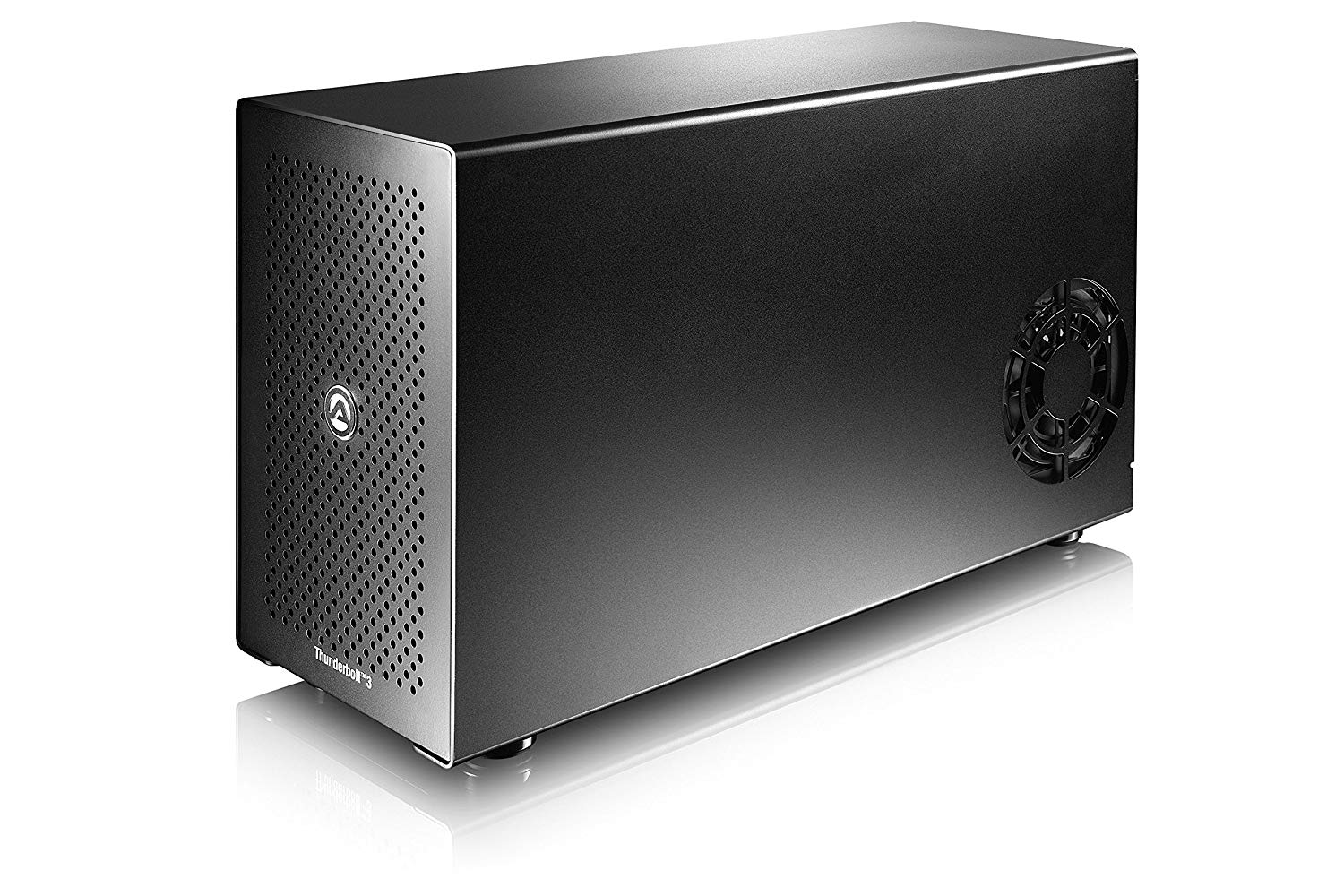
You can read our review on the AkiTio Node best eGPU contender.
The AkiTio Node is an interesting product in that it boasts a very sharp, clean design with minimal branding and works near-seamlessly on both Windows and Mac. Many users report that it simply “works.” Drop in your card, plug it in, and download your drivers, and you’re off to the races. The Node does not offer expanded I/O, but this helps its case as well.
The Node comes in at a very competitive price point of $329, which is $200 less than the Razer Core. Sure, you lose your additional ports, but the Node, unlike the Core, works without issue on most setups.
It also uses Thunderbolt 3 (Thunderbolt 3 best eGPU), which means your graphics card won’t be starved for bandwidth. The only real downside to the Node is that it can often take a long time to ship to the United States. Estimated shipping varies between two and three weeks from date of processed order.
This is to be expected with a relatively small and unknown company. This could also easily be the best one.
Conclusion
In conclusion, when looking for the best eGPU, whether you’re buying an Alienware Graphics Amplifier or AkiTio Node, there are many best eGPU options on the market for you. Alienware laptops dominate the gaming market, and this means that the majority of customers with high-end laptops are likely to own one of these brands, enabling access to a really nice product that they know will just work.
While AkiTio is not as affordable as the Graphics Amplifier by Alienware but it is much more affordable than the other brands, and it’s the only best external GPU enclosure on our list that stands with glowing reviews, touting how it “just works.”
In the future, as more laptops hit the market with better mobile CPUs for better prices, the market for best eGPU is only going to grow. Here’s to hoping for that.
- AndaSeat Kaiser 3 Review: A Welcome Surprise! - September 13, 2023
- Secretlab Professional Footrest Review: Expensive, But Ultra Solid - March 9, 2023
- Sofa Sack Bean Bag Chair Review - September 10, 2022
